Secrets For Choosing the Right Prop
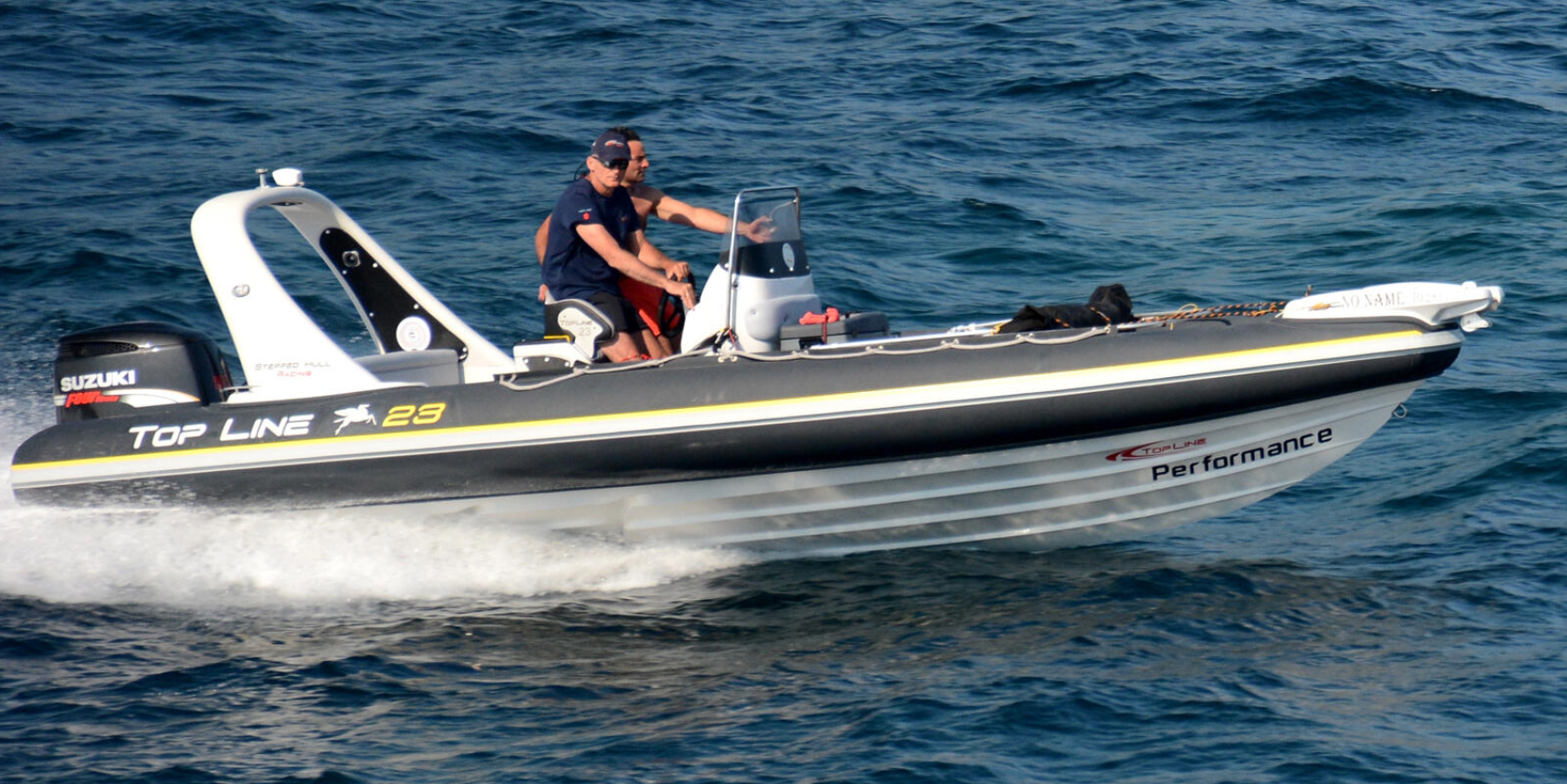
Choosing the right propeller for a boat is not a simple process because it depends on many factors that interact with each other to such an extent that it’s not possible to know what exactly is going on behind the boat. The purpose of this article is to offer some help when choosing the right propeller for a given combination of hull, engine, mounting height and operating conditions.
No Ideal Application
We must remember our ultimate goal is to achieve the best match of the propeller with our hull and engine always in relation with the desired usage and the load being carried. As many experienced boaters know, there is no formula that will automatically show us the right propeller. General knowledge of physics and hydrodynamics, rules and theories must be used for our calculations.
Trying to organize our thoughts, the first thing we need to do is be able to “read” the characteristics of a propeller and understand how each of them works. No propeller is perfect. Each one is unique, has been designed to behave specifically and provide performance depending on its design characteristics.
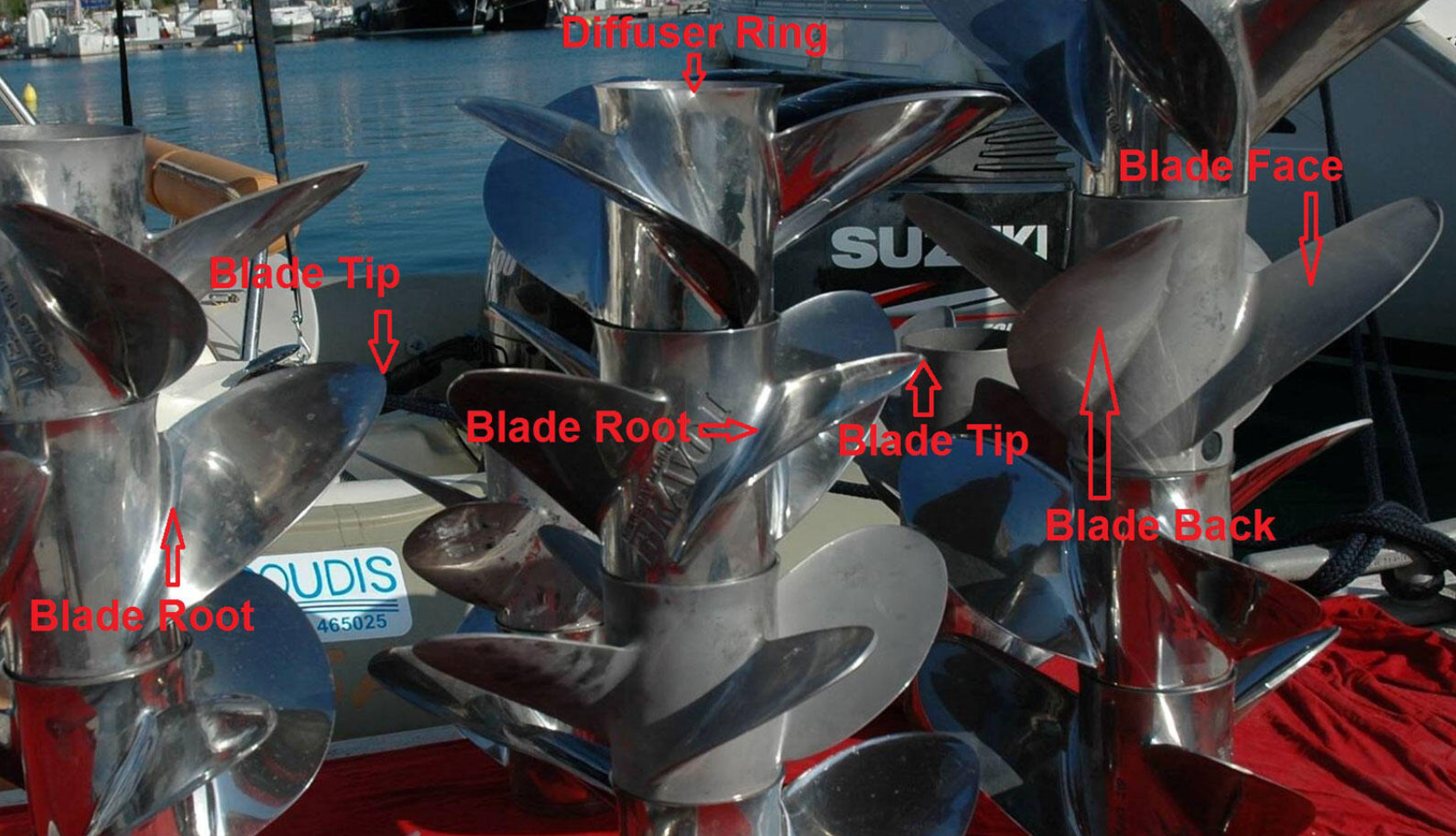
Getting Started
First, we must be able to observe a propeller’s characteristics and distinguish which features may not suit our engine-boat combination. After all, we don’t want to run unnecessary tests.
The most important characteristics of a propeller are its diameter and pitch. After choosing the proper dimensions for our engine-boat combination, then we can focus on the other features of the propeller.
For instance, a propeller with 15” (38.1 cm) diameter and 21” (53.34 cm) of pitch is available in many styles, designs and options.
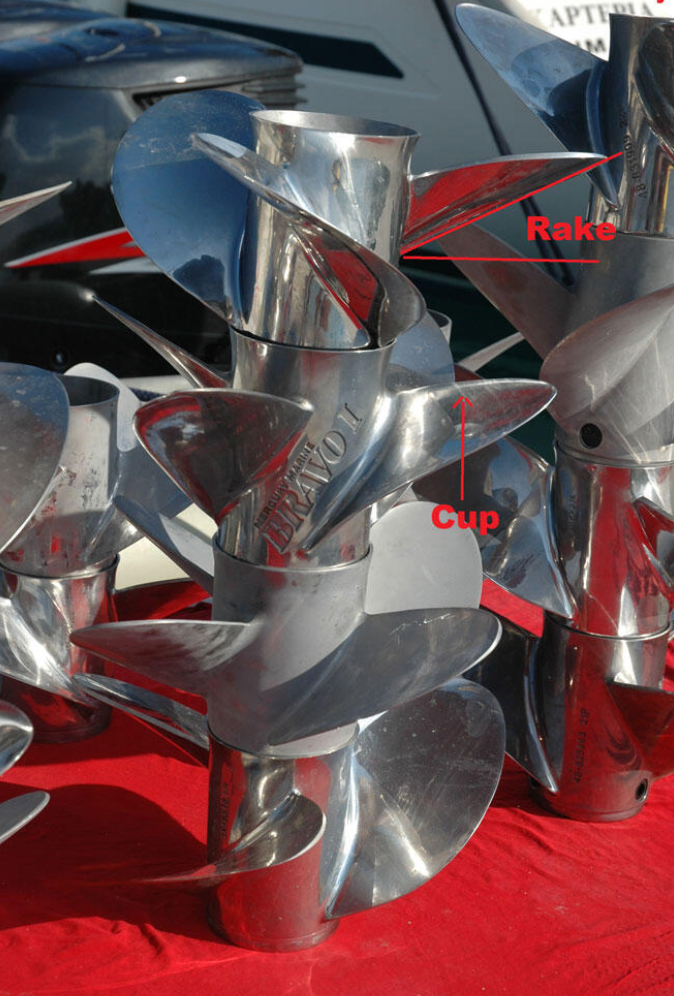
How to Choose
In addition to diameter and pitch, we must consider the number of blades, total surface area, blade shape, cup, rake angle, skew and so on.
So to choose the most suitable propeller, we need to know what each one of the aforementioned characteristics does. What is the role of the diameter and the pitch, of an extra blade, of the cup and the rake and how each of them affects engine rpm.
Now we can Choose the Right Propeller
Well, not quite. This is because a propeller doesn’t run alone but it must “cooperate” with the hull.
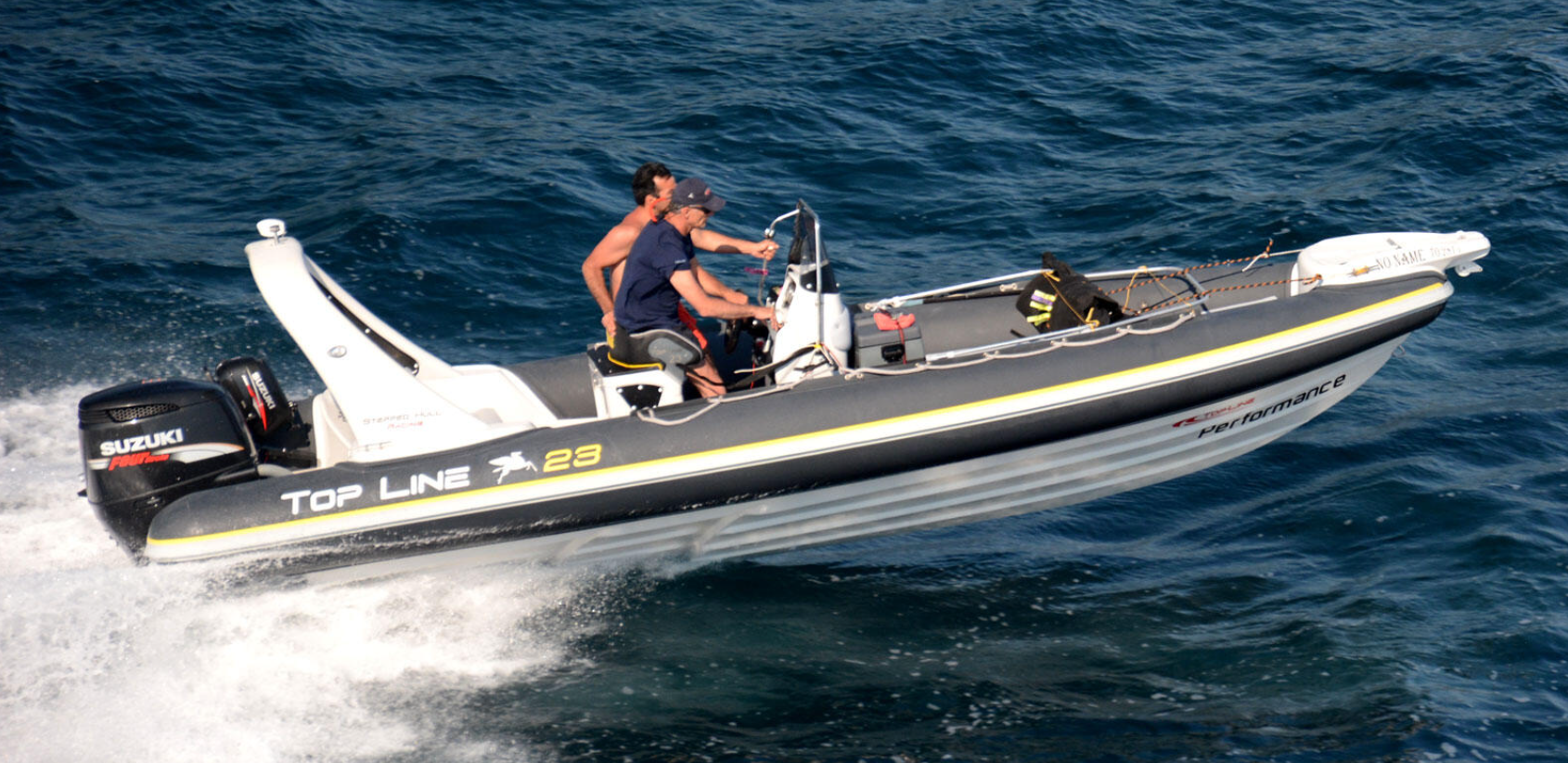
Knowing the characteristics of a propeller is a step in the right direction. Next, we need to know the characteristics of our boat’s bottom design.
No two designs are the same and each bottom is designed for a particular use. Each hull has its own specific features that will be affected by chosen propeller.
Before we chose the prop, we spent countless hours observing our hull’s attitude when underway and how it behaves good and in bad conditions and where it needs help. The secret is to select the propeller that has those characteristics that will help the boat reach its full potential.
For example, if our hull design is stepped, we don’t need a prop the generates much stern lift because this will force the bow down. This would adversely affect performance by limiting speed, increasing fuel consumption and possibly creating a dangerous situation in following seas. For this application, we would want a prop that carries the bow and doesn’t lift the stern.
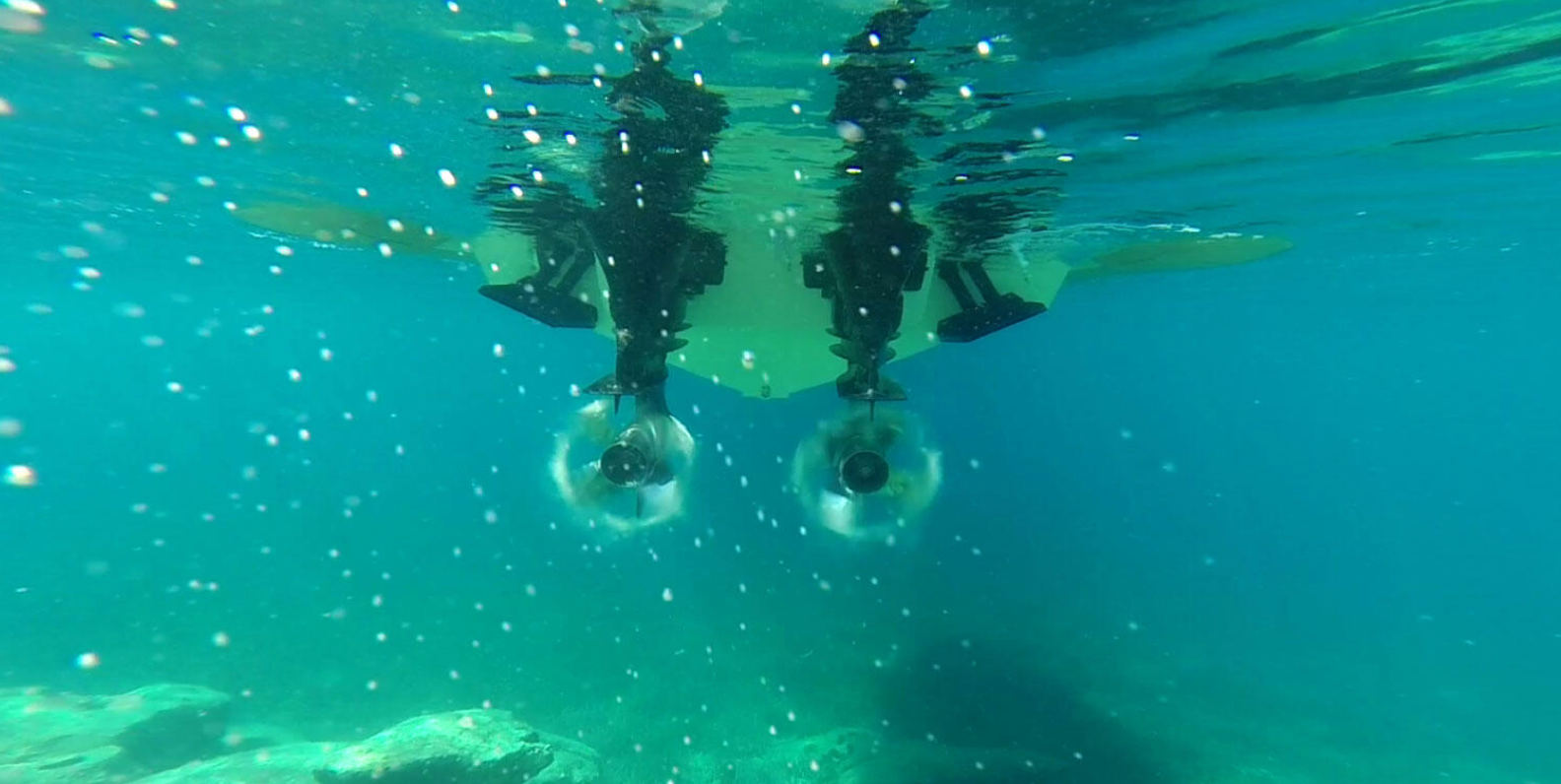
Even with this knowledge, there are still other design elements of our boat that need to be considered including:
- The outboard engine’s horsepower and its lower-unit gear ratio and the mounting height on the transom. This does not apply for sterndrives or inboards.
- The loads we are usually carrying, our boat’s intended use and the expected sea conditions.
- The propeller that we will eventually choose should allow our engine to reach, at least, at the middle of the maximum rpm range recommended by the manufacturer.
- The choice of the most suitable propeller is a fairly complex process that requires knowledge, experience, patience and many sea trials.